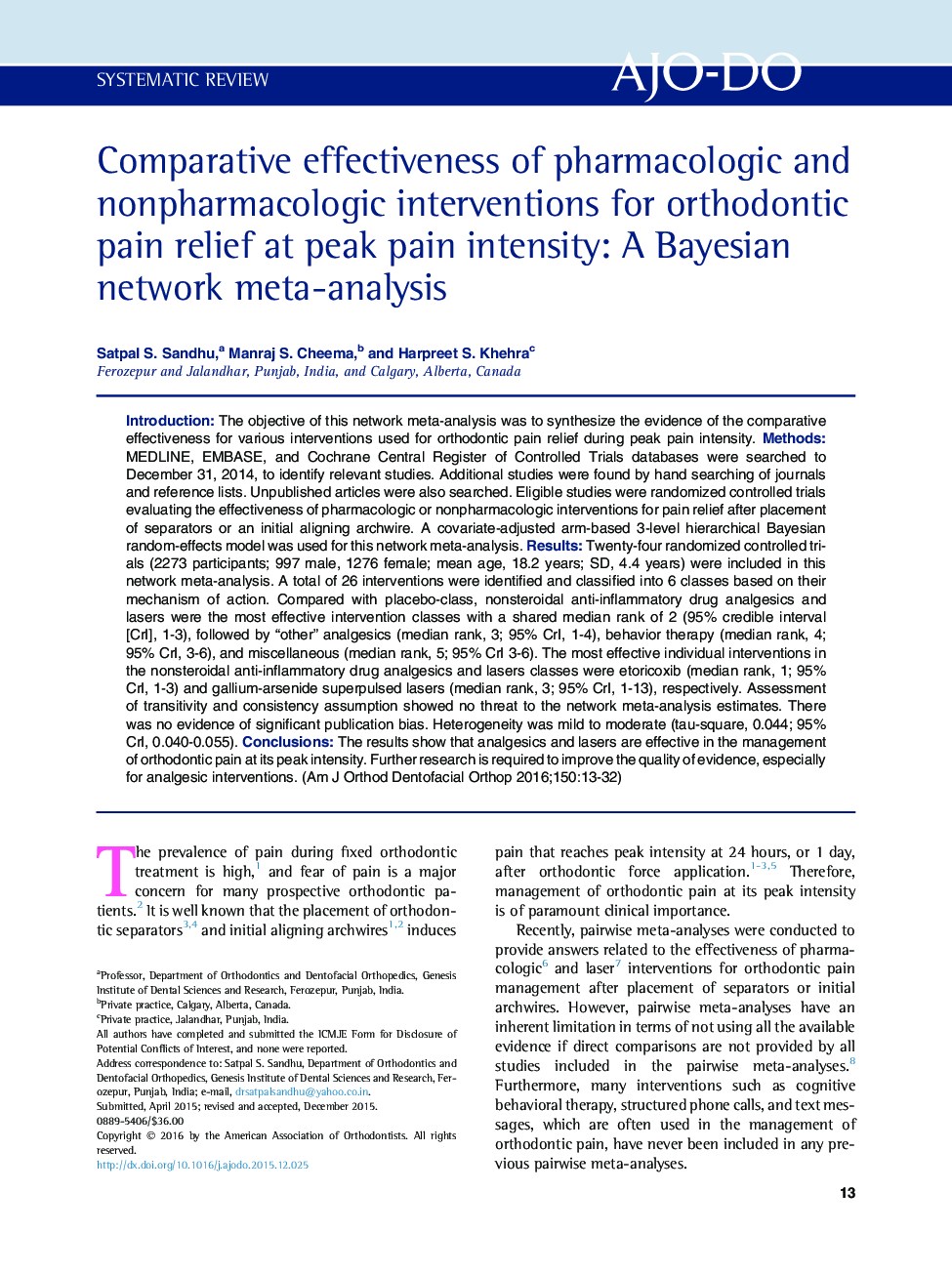| کد مقاله | کد نشریه | سال انتشار | مقاله انگلیسی | نسخه تمام متن |
|---|---|---|---|---|
| 3115369 | 1582674 | 2016 | 20 صفحه PDF | دانلود رایگان |
• We conducted a comprehensive systematic review and a Bayesian network meta-analysis.
• We evaluated the effectiveness of various interventions for orthodontic pain relief.
• We used recent developments in network meta-analysis for a complex network of interventions.
• The 3-level hierarchical model allowed ranking of interventions and intervention classes.
IntroductionThe objective of this network meta-analysis was to synthesize the evidence of the comparative effectiveness for various interventions used for orthodontic pain relief during peak pain intensity.MethodsMEDLINE, EMBASE, and Cochrane Central Register of Controlled Trials databases were searched to December 31, 2014, to identify relevant studies. Additional studies were found by hand searching of journals and reference lists. Unpublished articles were also searched. Eligible studies were randomized controlled trials evaluating the effectiveness of pharmacologic or nonpharmacologic interventions for pain relief after placement of separators or an initial aligning archwire. A covariate-adjusted arm-based 3-level hierarchical Bayesian random-effects model was used for this network meta-analysis.ResultsTwenty-four randomized controlled trials (2273 participants; 997 male, 1276 female; mean age, 18.2 years; SD, 4.4 years) were included in this network meta-analysis. A total of 26 interventions were identified and classified into 6 classes based on their mechanism of action. Compared with placebo-class, nonsteroidal anti-inflammatory drug analgesics and lasers were the most effective intervention classes with a shared median rank of 2 (95% credible interval [CrI], 1-3), followed by “other” analgesics (median rank, 3; 95% CrI, 1-4), behavior therapy (median rank, 4; 95% CrI, 3-6), and miscellaneous (median rank, 5; 95% CrI 3-6). The most effective individual interventions in the nonsteroidal anti-inflammatory drug analgesics and lasers classes were etoricoxib (median rank, 1; 95% CrI, 1-3) and gallium-arsenide superpulsed lasers (median rank, 3; 95% CrI, 1-13), respectively. Assessment of transitivity and consistency assumption showed no threat to the network meta-analysis estimates. There was no evidence of significant publication bias. Heterogeneity was mild to moderate (tau-square, 0.044; 95% CrI, 0.040-0.055).ConclusionsThe results show that analgesics and lasers are effective in the management of orthodontic pain at its peak intensity. Further research is required to improve the quality of evidence, especially for analgesic interventions.
Journal: American Journal of Orthodontics and Dentofacial Orthopedics - Volume 150, Issue 1, July 2016, Pages 13–32
